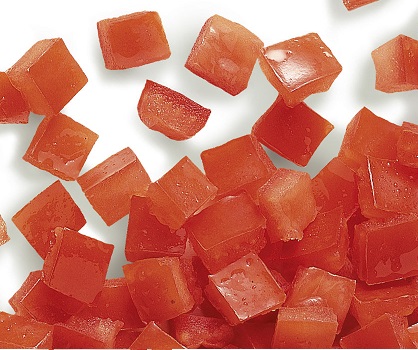In a study published in J Food Prot (2020) 83 (12): 2158–2166, researchers from Michigan State University assessed the efficacy of a novel sanitizer blend consisting of peracetic acid (PAA; OxypHresh 15) with a sulfuric acid–surfactant (SS) antimicrobial (PAA-SS; ProduceShield Plus) against Salmonella during simulated commercial washing of diced tomatoes. Overall, PAA-SS (1.75 ± 0.75 log CFU/g) was significantly (P ≤ 0.05) more effective than water (0.69 ± 0.42 log CFU/g), chlorine (0.35 ± 0.36 log CFU/g), or SS (0.36 ± 0.19 log CFU/g) in reducing Salmonella. After washing for 20 s, PAA-SS was the only sanitizer to show a significant (P ≤ 0.05) reduction (1.93 ±0.59 log CFU/g) in Salmonella. The yeast and mold populations were below the limit of detection (1.40 log CFU/g) and significantly (P ≤ 0.05) lower on diced tomatoes after 14 days of refrigerated storage Using PAA-SS as compared with the other treatments (8.37 ± 0.08 log CFU/g), with SS at pH 1.8 (3.91 ± 0.93 log CFU/g) most effective against yeast and mold in the absence of an organic load. @ https://meridian.allenpress.com/jfp/article-abstract/83/12/2158/441274/Use-of-a-Novel-Sanitizer-To-Inactivate-Salmonella?redirectedFrom=fulltext
A novel sanitizer inactivates Salmonella Typhimurium and Spoilage Microorganisms during Flume Washing of Diced Tomatoes
Use of a Novel Sanitizer To Inactivate Salmonella Typhimurium and Spoilage Microorganisms during Flume Washing of Diced Tomatoes | Journal of Food Protection | Allen Press
No comments

